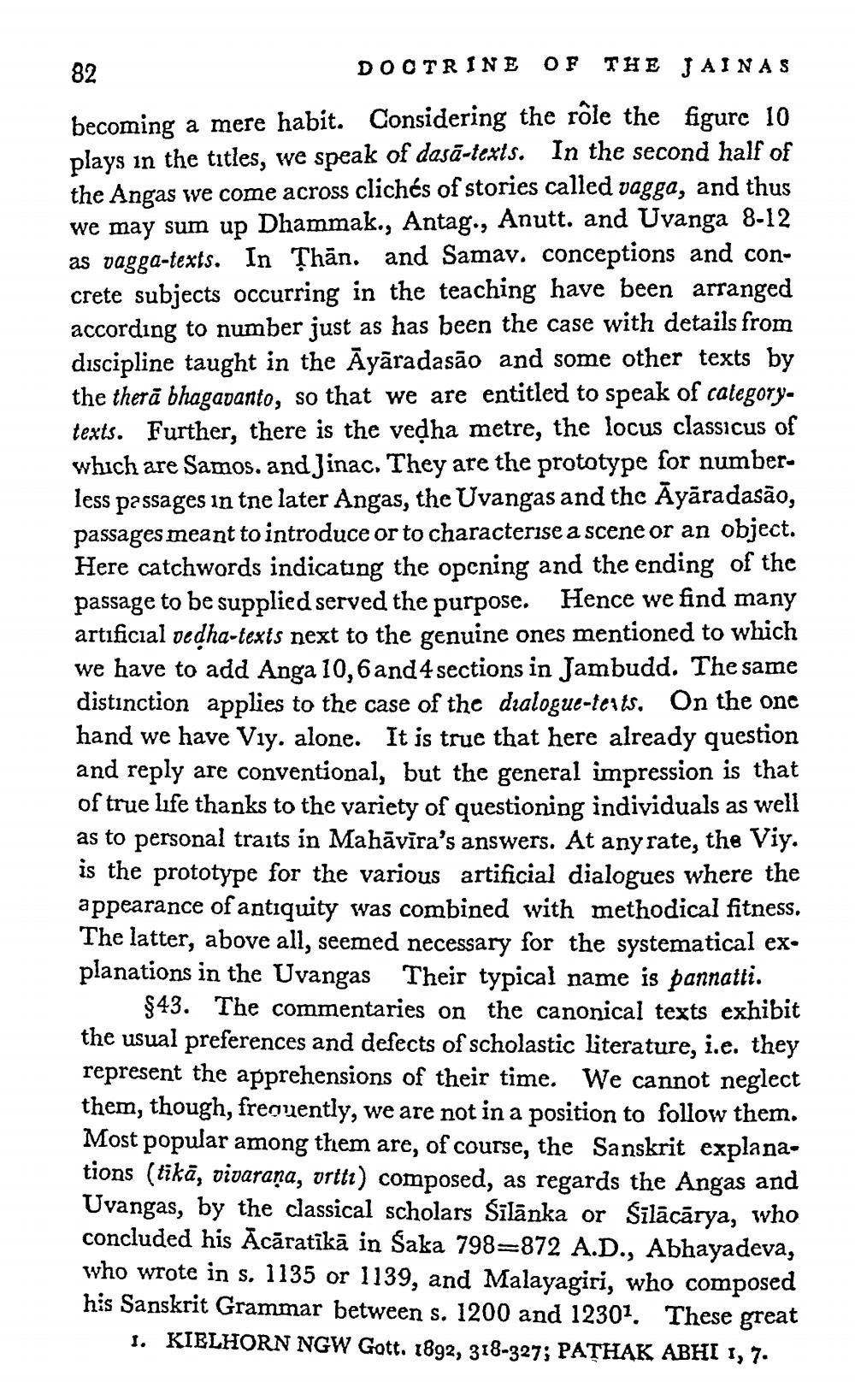________________
DOCTRINE OF THE JAINAS
becoming a mere habit. Considering the rôle the figure 10 plays in the titles, we speak of dasă-texts. In the second half of the Angas we come across clichés of stories called vagga, and thus we may sum up Dhammak., Antag., Anutt. and Uvanga 8-12 as vagga-texts. In Than. and Samav. conceptions and concrete subjects occurring in the teaching have been arranged according to number just as has been the case with details from discipline taught in the Ayāradasão and some other texts by the thera bhagavanto, so that we are entitled to speak of categorytexts. Further, there is the veḍha metre, the locus classicus of which are Samos. and Jinac. They are the prototype for numberless passages in the later Angas, the Uvangas and the Ayāradasão, passages meant to introduce or to characterise a scene or an object. Here catchwords indicating the opening and the ending of the passage to be supplied served the purpose. Hence we find many artificial vedha-texts next to the genuine ones mentioned to which we have to add Anga 10,6 and 4 sections in Jambudd. The same distinction applies to the case of the dialogue-texts. On the one hand we have Viy. alone. It is true that here already question and reply are conventional, but the general impression is that of true life thanks to the variety of questioning individuals as well as to personal traits in Mahāvīra's answers. At any rate, the Viy. is the prototype for the various artificial dialogues where the appearance of antiquity was combined with methodical fitness. The latter, above all, seemed necessary for the systematical explanations in the Uvangas Their typical name is pannatti.
$43. The commentaries on the canonical texts exhibit the usual preferences and defects of scholastic literature, i.e. they represent the apprehensions of their time. We cannot neglect them, though, frequently, we are not in a position to follow them. Most popular among them are, of course, the Sanskrit explanations (tikā, vivaraṇa, vrtti) composed, as regards the Angas and Uvangas, by the classical scholars Šilanka or Sīlācārya, who concluded his Acāratīkā in Śaka 798-872 A.D., Abhayadeva, who wrote in s. 1135 or 1139, and Malayagiri, who composed his Sanskrit Grammar between s. 1200 and 12301. These great
1. KIELHORN NGW Gott. 1892, 318-327; PATHAK ABHI 1, 7.
82




